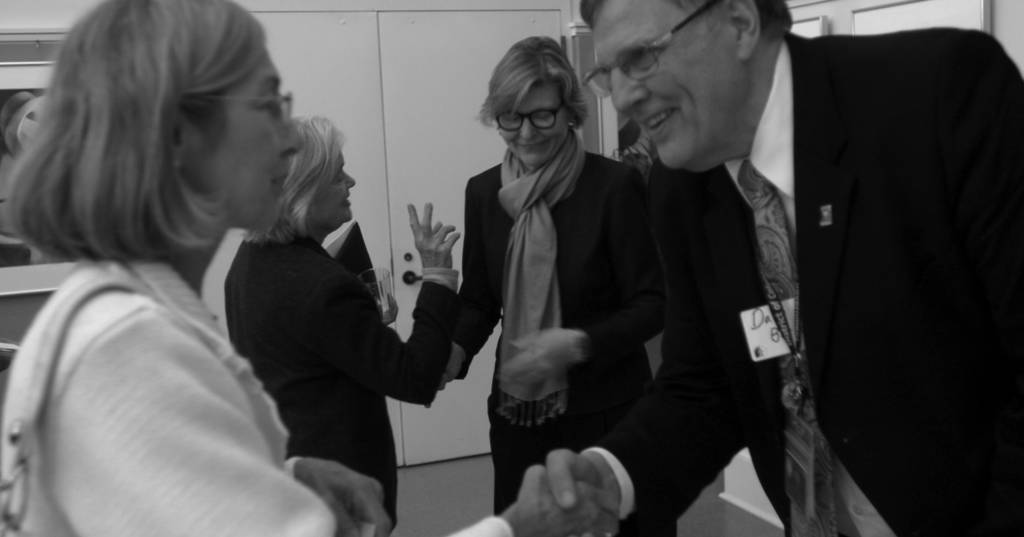Homelessness was something Candi Darley had observed while working as a nurse in Washington, D.C. She saw signs of extreme poverty in some of her patients: disheveled and disoriented, hair infested with lice.
Yet Darley never imagined that a series of unforgiving circumstances would lead to her decade-long struggle with homelessness, sleeping in shelters, hospitals and on the streets.
“One day I had to go to the hospital when I was at the shelter, and I didn’t get out until the morning,” Darley said. She wandered the streets, feeling lost and drugged, wearing her hospital gown. “I looked like the people that I had seen and said ‘That would never happen to me.’ But that happened to me.”
Darley’s desperate journey took a hopeful turn in 2010, when, with the help of the Community Council for the Homeless at Friendship Place (CCHFP), she found a place to call home. It was that same year that the city of Washington launched an ambitious five-year plan to end the cycle of homelessness for thousands of other city residents.
Two and a half years since the implementation of the five-year plan, city officials and homeless advocates celebrate success stories but still face many obstacles. To assess the progress, CCHFP hosted the symposium “Ending Homelessness in DC: Just How Close are We?” on April 24.
Officials agreed that the goal has been elusive. Permanent supportive housing programs have helped reduce the number of chronically homeless men and women living in the city, and programs targeting veterans have had a significant impact. However, the number of homeless families has exploded. In 2010, D.C.’s annual homeless count included a total of 6,539 men, women and children. In 2012, that total rose to 6,954.
“We’ve made some progress with the single-adult population, down from 3,900 people in 2009 to an official count of 3,767 for this year. So it’s down a little bit but not as much as we would want,” David Berns, director of D.C.’s Department of Human Services (DHS), told a diverse crowd of more than 150 D.C.-based leaders of government agencies and nonprofit organizations, members of neighborhood associations and faith-based organizations, and generally concerned residents. “Where we are really struggling is the changing face of homelessness in the District, and that’s families.”
The ongoing effects of the nation’s housing crisis and economic downturn, combined with the rising cost of housing, have had an impact on family homelessness, in the District and across the country. From 2009 to 2011, the number of homeless families in D.C. grew by 900 individuals, and the number of families placed in shelters and hotels more than doubled.
“We can’t continue this. We can’t continue mainly because of the kids,” Berns said. “One night living in that situation is too many.”
The five-year Strategic Action Plan to End Homelessness, developed by the District of Columbia and the Interagency Council on Homelessness, calls for a reduction of the overall number of homeless individuals and families through a combination of housing options and social services, including medical and psychological care, counseling and job training, to help address some of the problems that contribute to homelessness.
“We thought this was audacious but doable, based on new research showing solutions to homelessness that were more effective, and in many cases, costing less. It all had to do with getting people back in housing faster and linking them with services,” said Nan Roman, president and CEO of the National Alliance to End Homelessness.
In the system, families with no place else to go are placed in the city’s family emergency shelter at the former D.C. General Hospital. But officials, including Berns, acknowledge the arrangement is only a Band-Aid solution, and an expensive one at that. Maintaining a family at the hospital costs $150 a night, $80 more than permanent housing would cost, according to Berns. Numerous studies have shown a stable living situation is the first step to resolving other problems underlying homelessness.
“I am a true believer in the housing first philosophy, and that means that unless you get someone in a stable place to be, they’re not going to be successful in their mental-health plans, successful in their substance abuse issues, and they’re certainly not going to be successful in obtaining and retaining a job,” Berns said.
Though the fight to end homelessness among families has been a struggle, hope lies in the immense success seen locally and nationally among the veteran and single-adult populations.
The U.S. Department of Veterans Affairs (VA) implemented a five-year strategic plan in 2010 with a focus on consolidating resources and collaborating with government agencies such as the U.S. Department of Housing and Urban Development and community partners such as Friendship Place in order to help veterans regain stability as quickly as possible.
The program has been successful and is cited as a possible model for other homeless populations. In just one year, the number of homeless veterans in D.C. declined 11 percent, and the national success rate for people remaining in permanent housing after two years has remained at 85 to 90 percent.
“We can get everyone housed. There’s got to be a way that the U.S. can provide a house for everyone,” Jesse Vazzano, VA homeless coordinator, said to resounding applause. “Housing is not a reward. It’s a right.”
The other panelists agreed that permanent supportive housing is the solution, and though the government will ultimately be the source of housing for at-risk populations, it is impossible to end homelessness without continual advocacy and leadership.
Roman said she has not given up on seeing an end to homelessness, if not in the next two and a half years, at least within the foreseeable future.
“It’s all about political will,” she said. “There’s no question we could [end homelessness] in the next 10 years. We could do it in less than that if we wanted. It’s all driven by the fact that we don’t have enough housing.”







